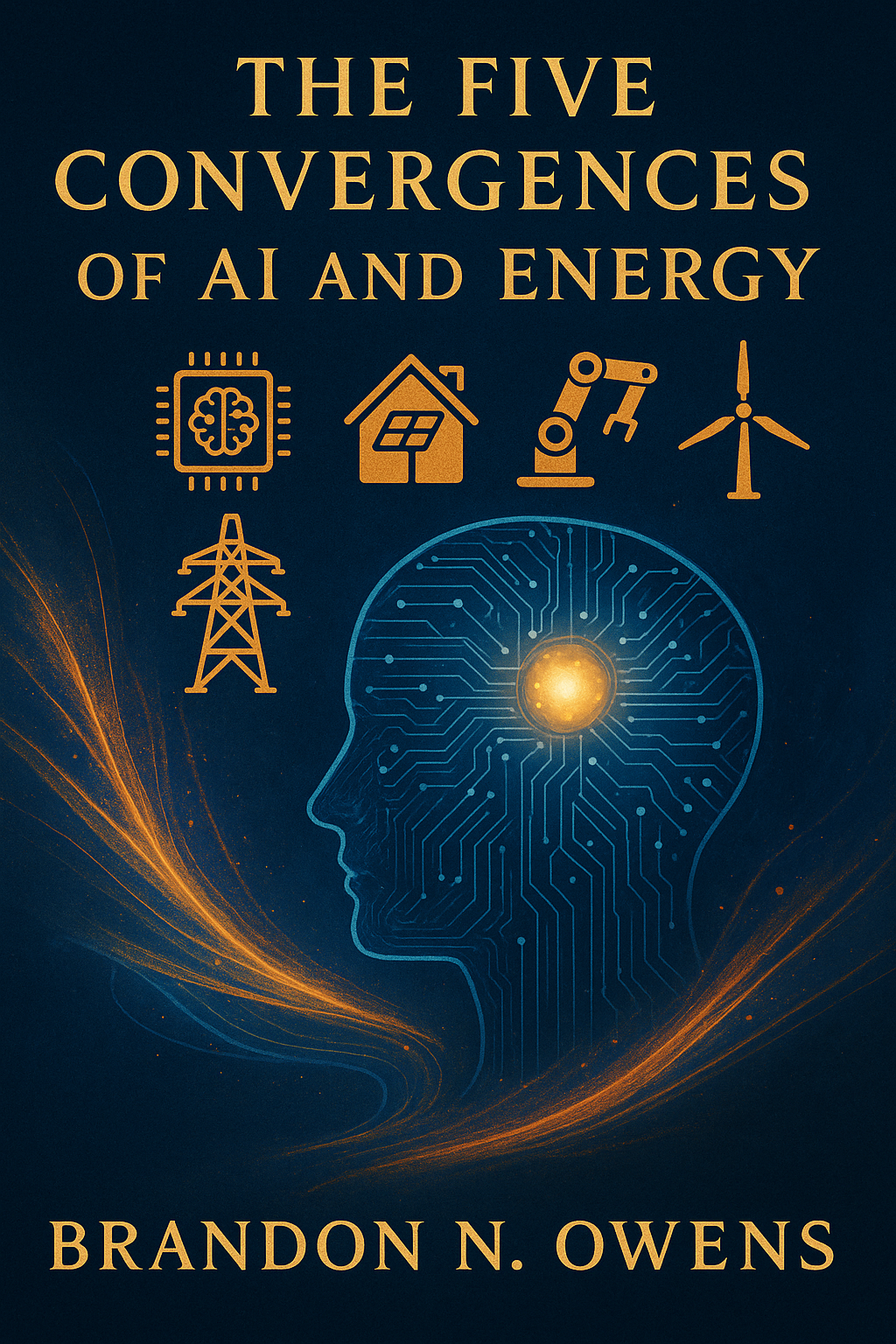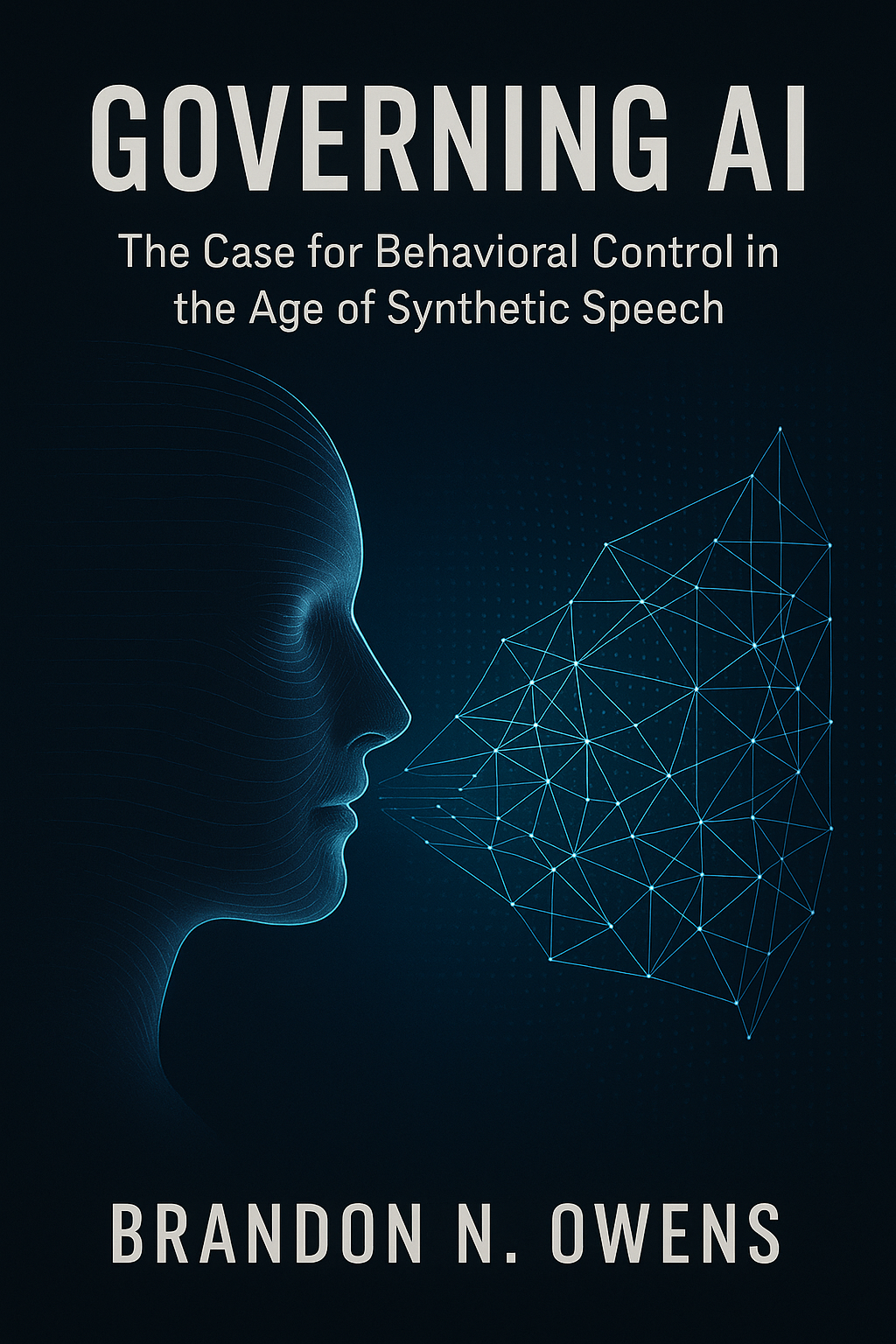Books
The Five Convergences of AI and Energy: How Artificial Intelligence Is Rewiring the Electric Grid, From Load to Law
Coming Summer 2025

In The Five Convergences of AI and Energy, Brandon N. Owens presents a bold, systems-level investigation into how artificial intelligence is becoming the dominant force reshaping the electric grid—not as a tool, but as a new substrate of control, cognition, and governance. Blending historical depth with technical insight, Owens charts the evolution of infrastructure from mechanical flows to synthetic logic, offering a blueprint for stewarding this transformation with wisdom, resilience, and democratic intent.
Beginning with The Grid Remembers, a cinematic prelude tracing the grid’s metamorphosis from analog muscle to digital memory, Owens sets the stage for a profound reckoning: artificial intelligence is not merely optimizing energy systems—it is redefining them.
The book unfolds in four sweeping parts:
Part I: The Age of Convergence builds the conceptual architecture. Owens defines cognition in infrastructure, differentiates automation from intelligence, and lays out the theory of convergence—not just as technical fusion, but as a social, political, and institutional event.
Part II: The Five Convergences examines five distinct modes through which AI and energy systems are now entangled:
- AI as Load explores AI’s staggering electricity demand, from hyperscale data centers to AI-generated grid stress.
- AI as Controller investigates machine-led dispatch, virtual power plants, and autonomy in critical grid functions.
- AI as Optimizer reveals how synthetic pattern recognition is transforming outage forecasting, maintenance, and tariff design.
- AI as Designer ventures into generative infrastructure—AI-drafted grid plans, microgrids, and even environmental reviews.
- AI as Ethical Challenge grapples with explainability, fairness, override protocols, and the civic implications of cognitive infrastructure.
Part III: Systemic Impacts turns to institutions, markets, and sovereignty. Owens explores how utilities are rewiring themselves culturally, how AI is distorting price signals and arbitrage dynamics, and how siting, sovereignty, and infrastructure governance are colliding in a world of algorithmic geography.
Part IV: Governance and the Future stakes a moral claim. It proposes a regulatory architecture for synthetic agents—simulation environments, audit protocols, grid sandboxes, and an emergent call for a Grid Constitution. In its closing chapter, Designing the Thinking Grid, Owens issues a challenge: the future grid must be intelligent, yes—but also equitable, accountable, and grounded in human values.
The Five Convergences of AI and Energy is not a book about technology alone. It is a manifesto for cognitive stewardship in an age when the grid begins to think before we have learned to govern its thoughts. Through vivid narrative, exacting detail, and provocative foresight, Owens offers the definitive guide to understanding—and shaping—the electric intelligence of the twenty-first century.
Governing AI: The Case for Behavioral Control in the Age of Synthetic Speech
Coming Fall 2025

Brandon N. Owens offers a groundbreaking framework for taming the expressive power of generative artificial intelligence. As AI systems increasingly speak with fluency, empathy, and institutional authority, Owens argues that speech itself must now be governed—not merely aligned or moderated.
Drawing on his background in the intersection between energy systems and AI, Owens lays the philosophical and technical foundation for a new class of AI regulation: behavioral containment enforced at runtime. This is not a book about datasets or model weights—it is a constitutional argument for how machines that speak must be bound by law.
The book opens with The Synthetic Century, a sweeping prologue that situates the rise of expressive AI within the broader arc of political theory and technological sovereignty. As Owens makes clear, when machines speak, they govern—and without public guardrails, synthetic expression risks sliding into coercion, confusion, and collapse of trust.
The book unfolds across four integrated sections:
Part I: The Expressive Threshold defines the moment we have entered—where AI is not just informational, but behavioral. Owens distinguishes synthetic fluency from synthetic governance, exposing the simulation problem at the core of modern generative models.
Part II: The Case for Containment lays out why current moderation tools fail, and introduces the five expressive domains—truth, identity, memory, emotion, and relation—where behavioral law must be declared and enforced to prevent harm.
Part III: The Architecture of Governance provides the technical blueprint for runtime regulation. Owens introduces the governance schema (a machine-readable constitution), the enforcement engine (modular, real-time containment), and the audit infrastructure required for public legitimacy.
Part IV: The Age of Behavioral Sovereignty culminates in a call to reimagine AI not as a product, but as a synthetic actor that must obey law. The final chapter presents Owens’s Laws—six non-negotiable principles designed to codify trust, ensure explainability, and restore democratic agency over synthetic expression.
Governing AI is both a constitutional manifesto and a systems manual. For engineers, ethicists, policymakers, and institutional leaders, it offers a practical yet profound path forward: a future where synthetic speech is governed by design—not left to chance. Through civic clarity, design precision, and moral urgency, Owens delivers not just a warning—but a plan.